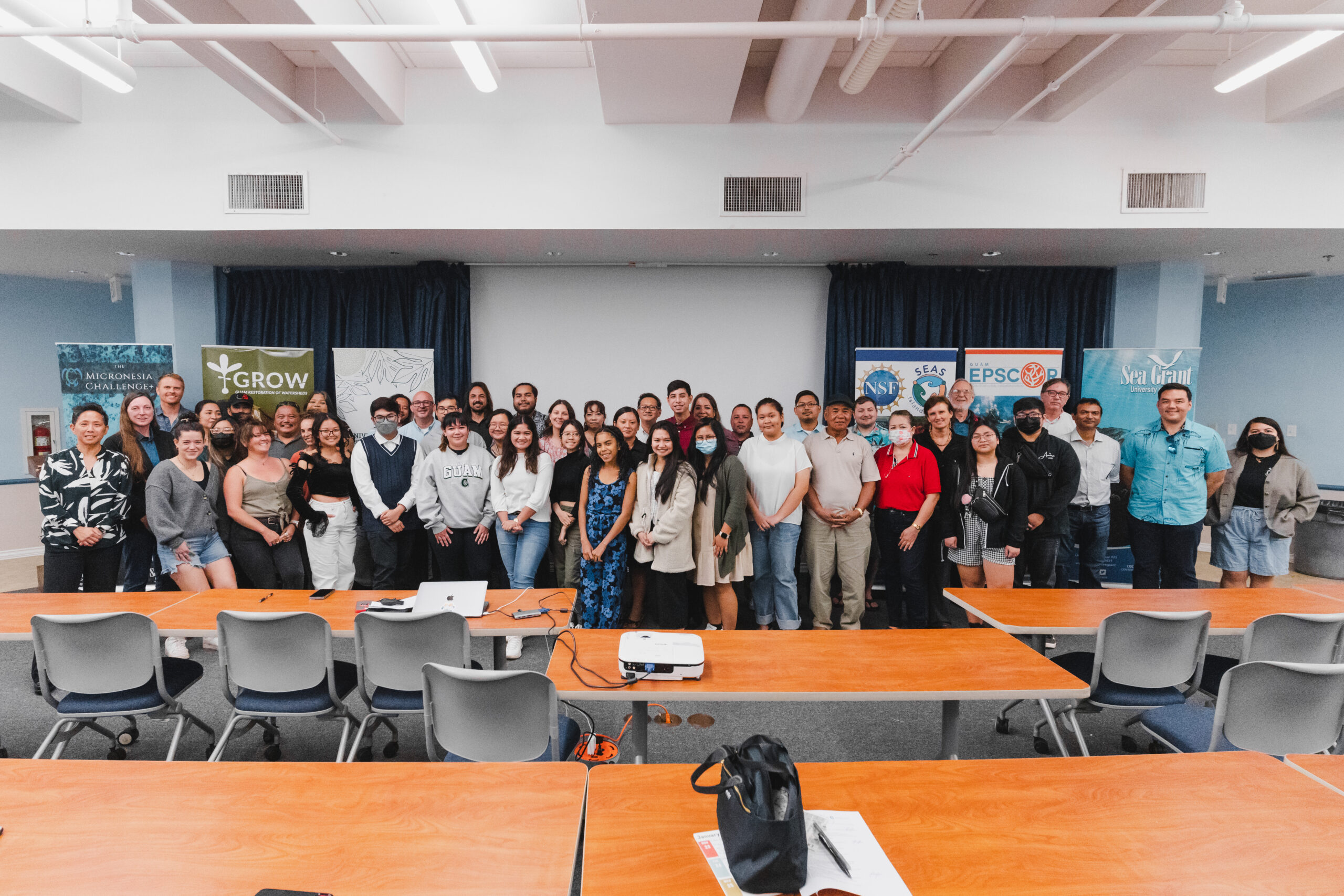The University of Guam launched its first Bioblitz, an international collaboration to catalog the diversity of marine organisms found along the coasts of Guam from February 2 – 22, 2024.
In a ceremony held Thursday, February 1, at the UOG cliffside, eight visiting marine scientists were welcomed by UOG staff, faculty and some of the island’s elected officials.
“I look forward to what your research says and whatever recommendations and outcomes come forward so that we can continue our own food sustainability and preservation for our future and our children,” said Gov. Lou Leon Guerrero.
A Bioblitz, also known as a biological inventory, is an event that focuses on finding and identifying as many species as possible in a specific area within a short time. Due to climate change, many species around the world are at risk of extinction and Bioblitzes provide an opportunity to inform future conservation efforts of at-risk species.
“We have the most diverse coral reefs in the U.S. We have more species of corals and more species of fishes, and we have a lot of stuff that we don’t even know we’ve got yet. That’s up to the people who have come to participate in this Bioblitz to find out what those things are,” said Guam NSF EPSCoR Principal Investigator, Dr. Terry Donaldson.
The Bioblitz is supported by the university’s National Science Foundation EPSCoR grant, which aims to employ cutting-edge methods to determine solutions that address
the challenges imposed by climate change on coral reefs and associated ecosystems.
The visiting scientists include:
· Dr. Gustav Paulay, Florida Museum
· Dr. Justin Scioli, Smithsonian Marine Station in Florida
· Dr. Kristine White, Georgia College & State University
· Dr. Barbara Mikac, University of Bologna
· Dr. Svetlana Maslakova, University of Oregon
· Dr. Ryutaro Goto, Kyoto Museum
· Shawn Wiedrick, Los Angeles County Museum
· John Slapcinsky, Florida Museum
Along with researchers from the UOG Marine Laboratory, the scientists will collect specimens such as crustaceans, worms, and mollusks through dives, intertidal walks, and by snorkeling. For this event, local community members, scientists, and fishers were consulted to develop a list of locations to collect specimens.
“I would like to acknowledge and thank everyone who is interested in protecting and restoring Guam’s incredible marine ecosystems and those who just appreciate it and value it,” said UOG Biorepository Curator of Crustacea, Dr. Robert Lasley. “All forms of knowledge are important and play a role in our endeavor to protect and restore this biodiversity.”
Once the specimens collected during the Bioblitz have been processed, they will be placed in the Guam NSF EPSCoR Guam Ecosystems Collaboratorium for Corals and Oceans Biorepository, a natural history collection of marine fauna and flora that serves as an archive of the biodiversity found within the Micronesian region.
“This island has been inhabited for thousands of years and it was made habitable by the ocean around us,” said Dr. Paulay, curator of invertebrates at the Florida Museum and a former director of the UOG Marine Laboratory. “The CHamoru people relied on the marine resources to keep going in a place like this. For an island community, there’s nothing more important than the ocean, so understanding the ocean is absolutely fundamental to island culture and to maintain life on the island.”











































